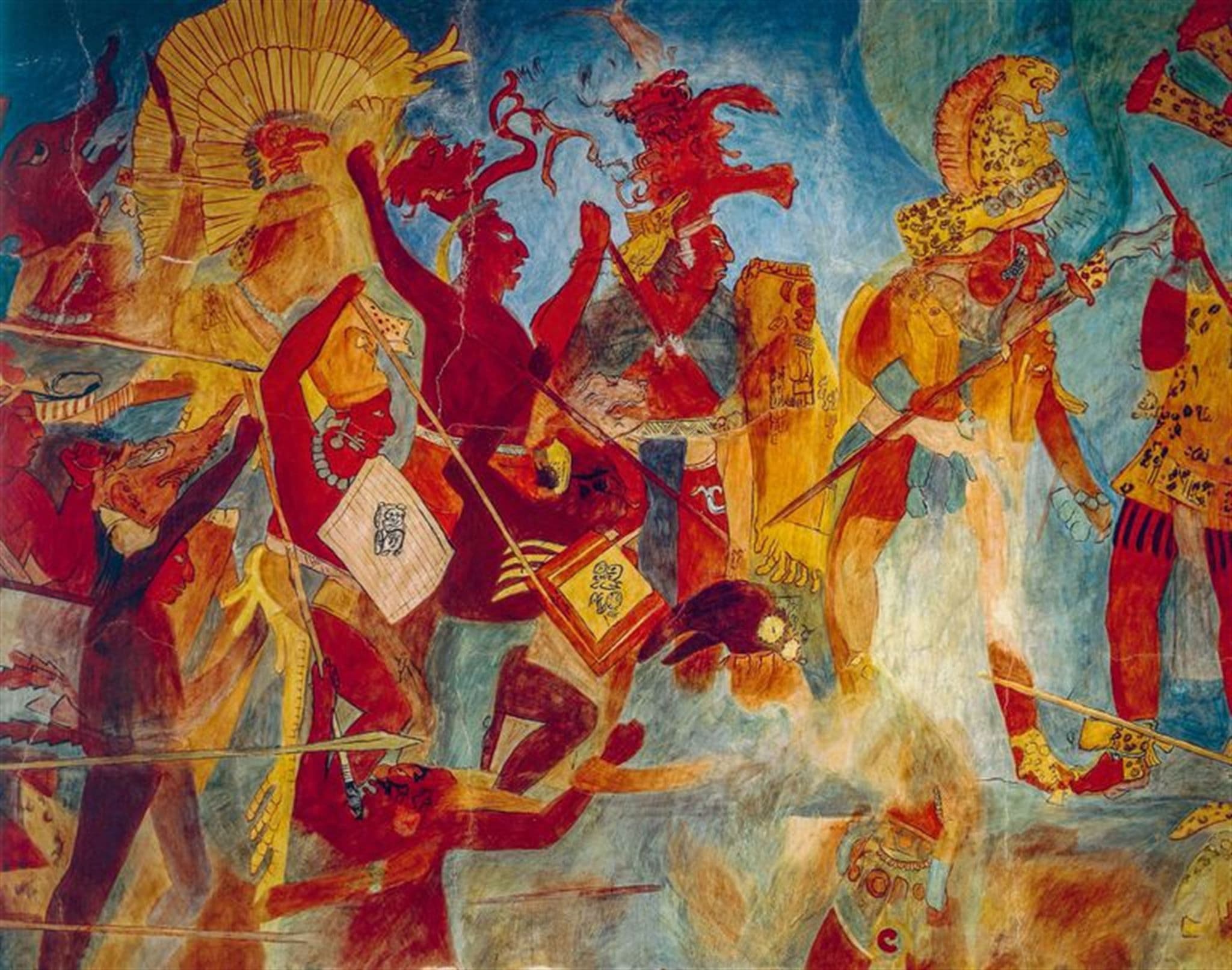Evidence #42 | September 19, 2020
Book of Mormon Evidence: Burning Cities
Post contributed by
Scripture Central

Abstract
The Book of Mormon’s description of armies burning cities and killing their inhabitants is supported by archaeological and textual evidence from ancient Mesoamerica.In the book of Ether, a military leader named Shiz spread terror throughout the Jaredite countryside by annihilating inhabitants and then burning their cities (Ether 14:17). Later, at the conclusion of the Nephite civilization, Lamanite armies (ca. AD 379) used a similar scorched-earth tactic, slaughtering Nephites and burning their towns, villages, and cities (Momon 5:5).
Maya city-states similarly burned enemy cities as an extreme military tactic. One Mayan word for this act of war is puluy (or puluuy) as shown in the following chart:1
Mayanists for years wondered if this term was literal or at least partly metaphorical. When coupled with a place name, it was clearly used in a war context like “chopping” (ch’ak), but some scholars clung to old romantic notions of Maya pacifism.2
All that ambiguity disappeared overnight on August 5, 2019 when a paradigm-shifting article appeared in the journal Nature Human Behavior. In a rare convergence of disciplines, two geologists, an archaeologist, and an epigrapher showed how lake sediment cores containing charcoal from Laguna Ek’ Naab, charred structures from the adjacent archaeological site of Witzna (anciently known as Bahlam Jol), and epigraphic texts using the term puluy from the site of Naranjo, 32 kilometers to the south, were interrelated.3
On May 21, AD 697, Naranjo brutally destroyed Witzna by torching the city and environs. The fire deposited a layer of charcoal 3 cm (approximately 1 inch) thick in the sediment on the bottom of Laguna Ek’ Naab. Human activity in the area practically disappeared for a number of years afterward.4
After their scorched-earth victory, ruling elites in Naranjo memorialized their depredation by carving inscriptions on Stelae 22 and 23 describing how Witzna (Bahlam Jol) “got burned” (puluy).5 Naranjo inscriptions describe a similar fire at Buenavista del Cayo (anciently known as Komkom) which “got burned” (puluy) on March 27, AD 696.6 As they had at Witzna, archaeologists found charred structures at Buenavista del Cayo that date to the indicated time period. Naranjo Stela 22 describes five sites being burned over a five-year period.7
Such findings have led researchers to conclude that the hieroglyph Puluuy “is a clear verb for war meaning ‘to burn’ in Cholan languages and has been noted in many war contexts.”8 Another article notes that “Puluuy was a common war statement and such tactics were not rare.”9 This data and analysis help demonstrate that the tactic of burning and destroying cities, as described in the Book of Mormon, is indeed attested in ancient Mesoamerica.
Book of Mormon Central, “Why Was the City of Ammonihah Destroyed and Left Desolate? (Alma 16:9–11),” KnoWhy 123 (June 16, 2016).
John L. Sorenson, Mormon’s Codex: An Ancient American Book (Provo, and Salt Lake City, UT: Neal A. Maxwell Institute for Religious Scholarship and Deseret Book, 2013), 381–425.
Stephen D. Ricks and William J. Hamblin, eds., Warfare in the Book of Mormon (Salt Lake City and Provo, UT: Deseret Book and FARMS, 1990).
- 1. Peter Mathews and Péter Bíró, eds., drawings by John Montgomery, FAMSI Maya Hieroglyph Dictionary, online at http://research.famsi.org/mdp/mdp_index.php.
- 2. For a summary of scholarly thinking about Maya warfare through the years, see David Webster, “The Not So Peaceful Civilization: A Review of Maya War” in Journal of World Prehistory, 14, no. 1 (2000), 65–119.
- 3. David Wahl, Lysanna Anderson, Francisco Estrada-Belli, and Alexandre Tokovinine, “Palaeoenvironmental, Epigraphic, and Archaeological Evidence of Total Warfare among the Classic Maya” Nature Human Behavior 3 (2019): 1049–1054.
- 4. David Wahl, et al., “Palaeoenvironmental, Epigraphic, and Archaeological Evidence,” 1049–1050, 1052.
- 5. See Alexandre Tokovinine, Place and Identity in Classic Maya Narratives (Washington, DC: Dumbarton Oaks, 2013), 33–34.
- 6. David Wahl, et al., “Palaeoenvironmental, Epigraphic, and Archaeological Evidence,” 1049–1050.
- 7. Simon Martin and Nikolai Grube, Chronicle of the Maya Kings and Queens: Deciphering the Dynasties of the Ancient Maya (London and New York: Thames & Hudson, 2008), 76.
- 8. James Brady and Pierre R. Colas, “Nikte’ Mo’ Scattered Fire in the Cave of K’ab Chante’” in Stone Houses and Earth Lords: Maya Religion in the Cave Context, ed. Keith M. Prufer and James E. Brady (Boulder, CO: University Press of Colorado, 2005), 158.
- 9. David Wahl, et al., “Palaeoenvironmental, Epigraphic, and Archaeological Evidence,” 1049.